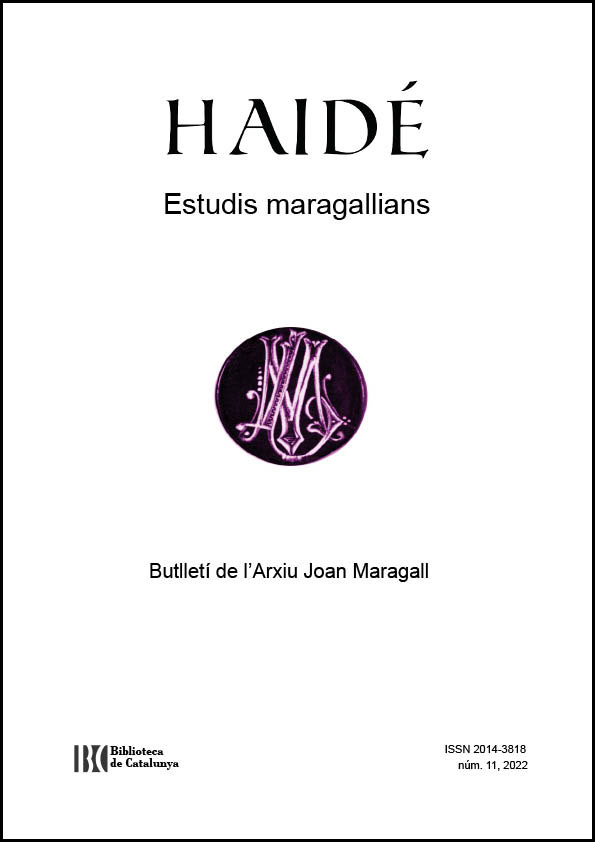About Maragall's Sapphic and anonymous friend
Article Sidebar

Main Article Content
This essay proposes a revision of “A un amic”, one of the poems Maragall included in Les disperses (1903). It is a piece which, due to both form and content (which has a clear Horacean pattern), provokes a certain strangeness in the corpus of the modernist poet. It is a minor, circumstantial poem, but one in which Maragall forces himself to allegedly follow neoclassical forms with a neatness to which he had never clung. He does so, as it has been mentioned before, in a circumstantial poem directed to an anonymous friend. Until now, Spanish models of this kind of poetry (such as Fray Luís de León and Garcilaso de la Vega) had been proposed but they do not seem to work as Maragall’s clear will to reproduce, albeit from afar, the sapphic verses. The hypothesis that the recipient, the friend, was Miquel i Soler o Roura is not based on very solid foundations either: vague echoes which are product of a biographical reading of the poem, with the aggravating fact that this piece is not dated which further complicates how to know the real circumstances of which this poem talks, given the case it actually talks about them. This article seeks to address these issues (about the model and the recipient) parting, basically, from the analysis of the metric and the Horacean theme. Thus, the author looks for the answer to these raised unknowns by going back to the Horacean translations by Joan Sardà, one of Maragall’s personal friends and to whom the poet dedicated an obituary study on the occasion of his death, in 1898.